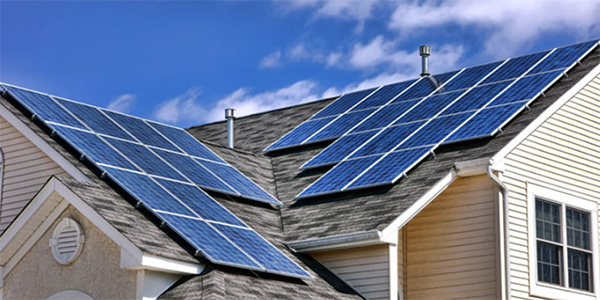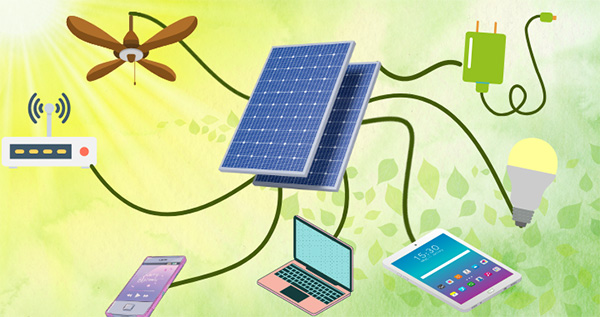Description
Monocrystalline solar panels are often considered the best choice for high temperatures due to their superior temperature coefficient and efficiency. However, specific performance can vary among brands and technologies. It's crucial to check the temperature coefficient when comparing options for hot climates.
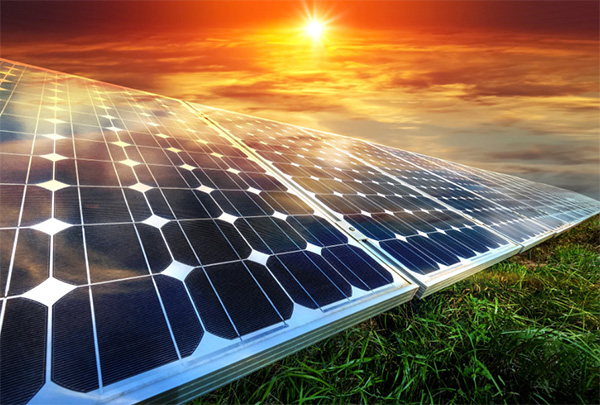
Types of Solar Panels
Solar panels are devices that convert sunlight into electricity. They are an essential part of solar energy systems and come in several types based on the materials used and their efficiency. Here are some of the most common types.
Monocrystalline Solar Panels
Monocrystalline solar panels are made from single-crystal silicon. The cells are composed of a single crystal structure, which makes the electrons generating the flow of electricity have more space to move. This enhances the efficiency of the panel.
- Appearance: They have a dark black color.
- Efficiency: Typically, they boast the highest efficiency rates because of the purity of the silicon, usually around 15-20%.
- Cost: They tend to be more expensive than polycrystalline panels.
- Durability: These panels are known for their longevity and durability.
Monocrystalline silicon offers a deep dive into the science and benefits of these panels.
Polycrystalline Solar Panels
Polycrystalline panels, as the name implies, are made from multiple crystal structures. This can render them slightly less efficient than monocrystalline panels, but they are available at a more affordable price point.
- Appearance: They have a blueish hue due to the way light interacts with the multiple crystals.
- Efficiency: Efficiency rates usually vary between 13-16%.
- Cost: They are generally more affordable than monocrystalline panels.
- Durability: While still durable, they might not last as long as their monocrystalline counterparts.
For a comprehensive understanding, you can explore
polycrystalline silicon.
Thin-Film Solar Panels
Thin-film solar panels are distinct from the other two. They are fabricated by depositing one or several thin layers of photovoltaic material onto a substrate.
- Appearance: They are slender and can have a homogenous look.
- Efficiency: Their efficiency is generally on the lower side, fluctuating between 10-12%.
- Cost: These are often the most cost-effective among the three types.
- Flexibility: One major advantage of thin-film panels is their flexibility.
- Weight: They are generally lighter than traditional panels.
For enthusiasts,
Thin-film solar cell provides a detailed exploration of the technology.
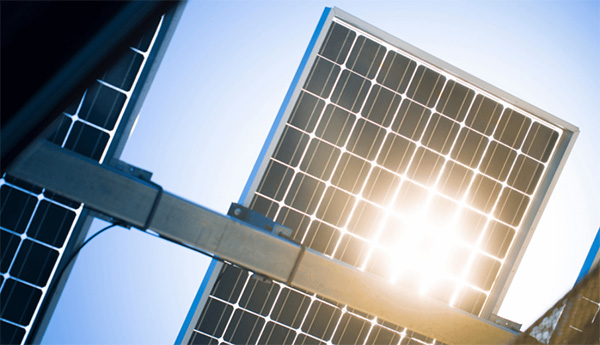
How Temperature Affects Solar Panel Efficiency
Solar panels, primarily made of silicon cells, convert sunlight into electricity. But like many electronic devices, solar panels are affected by temperature. The efficiency of solar panels tends to decrease as temperatures rise. Let's understand why this happens and what it implies for solar installations.
The Temperature Coefficient
Every solar panel comes with a temperature coefficient rating, which tells you how much the panel's efficiency will decrease for every degree above 25°C (or 77°F). Typically, the temperature coefficient for most silicon-based solar panels lies between -0.3% and -0.5% per °C.
For instance, if a solar panel has a temperature coefficient of -0.4% and the temperature increases by 10°C above the standard 25°C, the efficiency of the panel would reduce by 4%. This means, if the panel originally had an efficiency of 20%, it would decrease to 19.2% because of the temperature increase.
It's essential to understand the
temperature coefficient when evaluating a panel's expected performance in your region, especially if you live in a hot climate.
Real-World Implications
Hotter climates can see a more pronounced reduction in solar panel efficiency due to higher temperatures. While panels get warmer from the sun's rays, the surrounding air temperature also plays a significant role. On a very sunny and hot day, the surface temperature of solar panels can exceed the air temperature by 20-25°C.
However, it's crucial to note that while higher temperatures may decrease efficiency, they also usually come with more sunlight. More sunlight means the panels produce more electricity, which can offset the reduced efficiency to some extent.
Moreover, newer solar panel technologies and innovations are continually looking to address this concern. Manufacturers are researching materials and designs that can either withstand higher temperatures without losing efficiency or cool themselves more effectively.
To ensure maximum energy generation, it's crucial to consider local climate conditions, the
solar panel's specifications, and optimal installation techniques like ensuring proper ventilation and spacing.
In conclusion, while temperature can influence solar panel efficiency, with the right information and strategies, homeowners and businesses can maximize the benefits of solar energy, even in warmer climates.
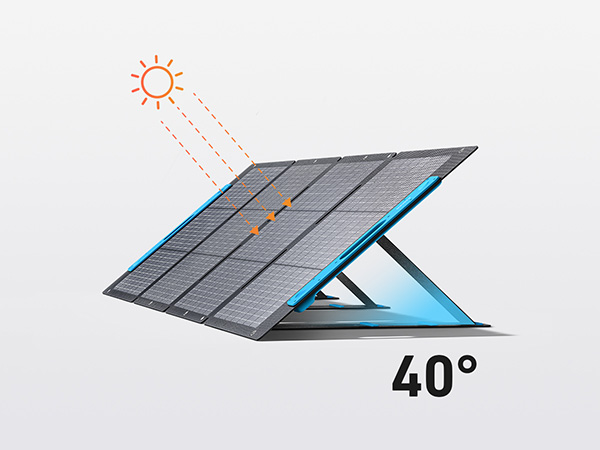
Materials and Coatings
Materials and coatings play a pivotal role in the solar industry, enhancing the efficiency, longevity, and capabilities of solar panels. These advancements aim to improve light absorption, reduce heat, and increase the overall efficiency of converting sunlight to electricity. Let's delve into the importance and functionality of these materials and coatings.
Anti-Reflective Coatings
Solar panels benefit immensely from the absorption of as much sunlight as possible. However, standard solar panel materials can reflect a significant portion of this light, reducing the potential energy conversion. Anti-reflective coatings tackle this challenge by minimizing the amount of sunlight that gets reflected away from the panel's surface.
- Function: These coatings increase the amount of sunlight that enters the solar cells. By doing so, more photons interact with the semiconductors, leading to higher electricity generation.
- Improvement: Anti-reflective coatings can boost a solar panel's efficiency by approximately 3% to 5%. This improvement might seem minor, but when scaled up for large installations, it can lead to significant increases in power generation.
For those interested in the science behind it, the concept of
anti-reflection dives deeper into the principles and varieties of such coatings.
Heat-Resistant Materials
One challenge with solar panels is the inherent relationship between temperature and efficiency. As panels get hotter, their efficiency tends to drop. Thus, the use of heat-resistant materials has become crucial.
- Function: Heat-resistant materials aim to ensure that solar panels don't get excessively hot, thereby preserving their efficiency. This is particularly important in sunny and hot regions.
- Materials Used: Common heat-resistant materials include ceramics and certain polymers, which can resist degradation at high temperatures and maintain the panel's structural integrity.
Exploring the realm of
heat-resistant materials offers insights into their development and wide-ranging applications beyond just solar panels.
New Material Innovations
The solar industry remains at the forefront of material science innovations. Researchers continually seek materials that can improve efficiency, longevity, and affordability of solar installations.
- Perovskite Solar Cells: One of the most promising new materials is perovskite. Solar cells made from perovskite have shown efficiencies rivaling traditional silicon cells but at a fraction of the cost.
- Graphene: Another exciting development is the incorporation of graphene, a single layer of carbon atoms arranged in a hexagonal lattice. It offers potential benefits like increased conductivity and resistance to environmental factors, making solar panels more durable and efficient.
Understanding
perovskite solar cells and
graphene provides a glimpse into the future of solar energy technology and its potential impact on global energy consumption.

Evaluating Performance in High Temperatures
Solar panels' performance in hot climates is a topic of significant interest, especially with the increasing adoption of solar energy in regions with high-temperature profiles. Elevated temperatures can impact the efficiency of solar panels, but understanding the degree of this impact requires a nuanced exploration of real-world metrics and a comparative analysis across different panel types.
Real-world Performance Metrics
When evaluating the performance of solar panels in high temperatures, several metrics become essential:
- Nominal Operating Cell Temperature (NOCT): This metric provides the operating temperature of a solar panel when exposed to specific conditions: an ambient temperature of 20°C, solar irradiance of 800 W/m², and wind speed of 1 m/s. For example, a standard silicon solar panel might have an NOCT of around 45°C.
- Temperature Coefficient: This coefficient indicates the percentage decrease in efficiency for every degree Celsius rise in temperature above 25°C. For instance, if a panel has a temperature coefficient of -0.4%, and the temperature is 10°C above standard conditions, there's a potential 4% decrease in efficiency.
More details on
Nominal Operating Cell Temperature (NOCT) can provide insights into how this metric serves as a benchmark for assessing panel performance in the field.
Comparative Analysis of Solar Panel Types in Hot Climates
| Solar Panel Type |
Average Temperature Coefficient (%/°C) |
Average NOCT (°C) |
Approx. Efficiency Drop at 40°C (%) |
| Monocrystalline |
-0.35 |
48 |
5.25 |
| Polycrystalline |
-0.40 |
49 |
6.0 |
| Thin-Film |
-0.25 |
44 |
3.75 |
The table showcases the comparative performance of different solar panel types in hot climates. It's evident that thin-film panels tend to have a lower drop in efficiency at elevated temperatures compared to crystalline types. However, this is just one aspect of their performance, and other factors like overall efficiency, durability, and cost also play crucial roles in determining the best choice for specific installations.
Understanding the properties and advantages of
monocrystalline,
polycrystalline, and
thin-film panels can help in making informed decisions for installations in hot climates.
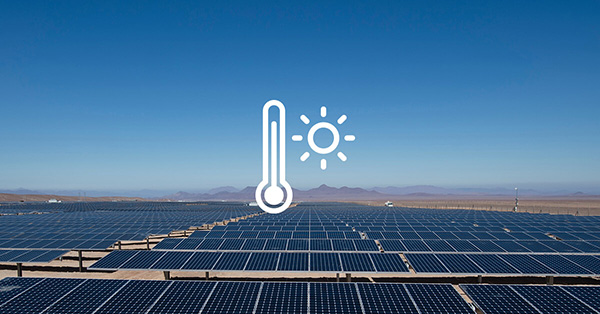
Case Studies
When considering solar installations, it's beneficial to review real-world case studies to gain insights into challenges and successes, especially in regions with unique weather conditions such as hot climates. The following sections present examples from both large-scale solar farms and residential installations.
Solar Farms in Hot Climates
The Sahara Solar Project: One of the most ambitious projects, the Sahara Solar Project aims to harness the immense solar potential of the world's largest desert. Here's a brief overview:
- Location: Sahara Desert, spanning several North African countries.
- Installed Capacity: Expected to generate up to 200 gigawatts once fully operational.
- Brands Involved: Multiple global players are involved in this initiative, but one that stands out for its innovation and quality is Tongwei. With its advanced solar cells and commitment to sustainable energy, Tongwei has positioned itself as a trusted name in the industry.
Challenges:
- Maintaining optimal efficiency in the scorching heat.
- Ensuring the infrastructure can withstand desert conditions, like sandstorms.
Successes:
- Advanced cooling systems have allowed the panels to operate closer to their peak efficiency.
- Collaboration with brands like Tongwei has provided access to the latest in solar technology.
Residential Cases
Riyadh Home Solar Installation: In the heart of Saudi Arabia, a residential solar project demonstrates the viability of solar energy for individual homes in hot climates.
- Location: Riyadh, Saudi Arabia.
- Installed Capacity: 15 kilowatts, capable of powering the entire residence.
- Brands Involved: The homeowners opted for Tongwei solar panels, citing their impressive temperature resilience and efficiency track record.
Challenges:
- Ensuring the setup blends with the home's aesthetic without compromising efficiency.
- Dealing with consistently high temperatures which can affect panel efficiency.
Successes:
- Electricity bills reduced by over 60%.
- The setup serves as a model for other homeowners in the region, showcasing the tangible benefits and cost savings from solar installations.
From large-scale desert projects to individual homes in Riyadh, the drive towards solar energy is evident. Brands like Tongwei, with their dedication to innovation and quality, are playing a vital role in shaping the future of sustainable energy in hot climates.
Environmental Considerations
Environmental factors significantly influence the design, deployment, and efficiency of solar installations. These factors can vary greatly depending on the geographical location and climate of the installation site. While solar panels have an overarching positive impact on the environment by reducing carbon footprints, it's vital to understand and navigate the unique challenges posed by different climates.
Desert and Tropical Climates
Characteristics:
- High temperatures, often surpassing 40°C.
- Intense sunlight for prolonged periods.
- In tropical areas, heavy rainfall and humidity can be frequent.
Challenges:
- Dust and sand can accumulate on the panels in deserts, reducing their efficiency. Periodic cleaning becomes essential.
- High humidity in tropical regions can affect the longevity and durability of some solar panel materials.
Adaptations:
- Specialized mounts to increase airflow under panels, helping with cooling.
- Integration of microinverters to optimize energy production from each panel, compensating for potential shading or dust accumulation.
- Hydrophobic coatings to reduce moisture buildup and enhance self-cleaning in rainy regions.
Cold Climates with Hot Summers
Characteristics:
- Temperatures can drop significantly, with potential snowfall in winter.
- Summers can be hot, with temperatures often exceeding 30°C.
Challenges:
- Snow accumulation can obstruct sunlight, necessitating regular panel clearing.
- The wide temperature fluctuations can strain the panels and their supporting structures.
Adaptations:
- Installing panels at steeper angles to facilitate snow sliding off naturally.
- Using robust racking systems and materials that can endure temperature fluctuations without compromising structural integrity.
- Incorporating advanced solar trackers that adjust the panel's position throughout the day to maximize sunlight absorption.
In conclusion, the environment plays a pivotal role in the effectiveness of solar energy systems. By understanding and adapting to these unique challenges, solar energy can be harnessed efficiently and sustainably across various global climates.
Maintenance and Monitoring
Effective maintenance and monitoring practices are vital for ensuring the prolonged efficiency and lifespan of solar panels. As solar installations are often long-term investments, consistent oversight can optimize performance, safeguard the equipment, and ensure the expected return on investment.
Keeping Panels Cool
Importance: Elevated temperatures can decrease the efficiency of solar panels. A study suggests that for every 1°C increase above the optimal temperature, solar panels can lose about 0.4% to 0.5% of their efficiency.
Methods:
- Enhanced Ventilation: Elevating solar panels slightly above the mounting surface allows for airflow, facilitating natural cooling.
- Cooling Systems: Some advanced installations employ active cooling systems, such as photovoltaic thermal hybrid solar collectors, which combine photovoltaic solar panels with a liquid-based thermal collector. This combination cools the panels while also harnessing the removed heat for additional energy generation or direct heating purposes.
- Shade Structures: Building shade structures over the panels can reduce direct exposure to sunlight, thereby decreasing heat absorption.
Long-term Efficiency
Importance: Over time, solar panels can experience efficiency degradation. On average, traditional solar panels lose about 0.5% to 1% of their efficiency each year. Therefore, monitoring this degradation is crucial for predicting performance and planning maintenance.
Methods:
- Regular Cleaning: Dust, pollen, and other debris can accumulate on the panels, reducing light absorption. A routine cleaning schedule, adapted to the local environment, can help maintain optimal efficiency.
- Monitoring Systems: Using advanced solar monitoring tools allows homeowners and businesses to track real-time performance, energy generation, and potential issues. These systems can send alerts if the efficiency drops below expected levels or if any malfunctions occur.
- Periodic Inspections: Annual or bi-annual professional inspections can identify potential problems early on, such as micro-cracks, inverter issues, or degradation beyond the expected norms.
Ensuring consistent performance and a long lifespan for solar installations requires proactive maintenance and vigilant monitoring. By embracing these practices, users can harness sustainable solar energy efficiently for decades.







